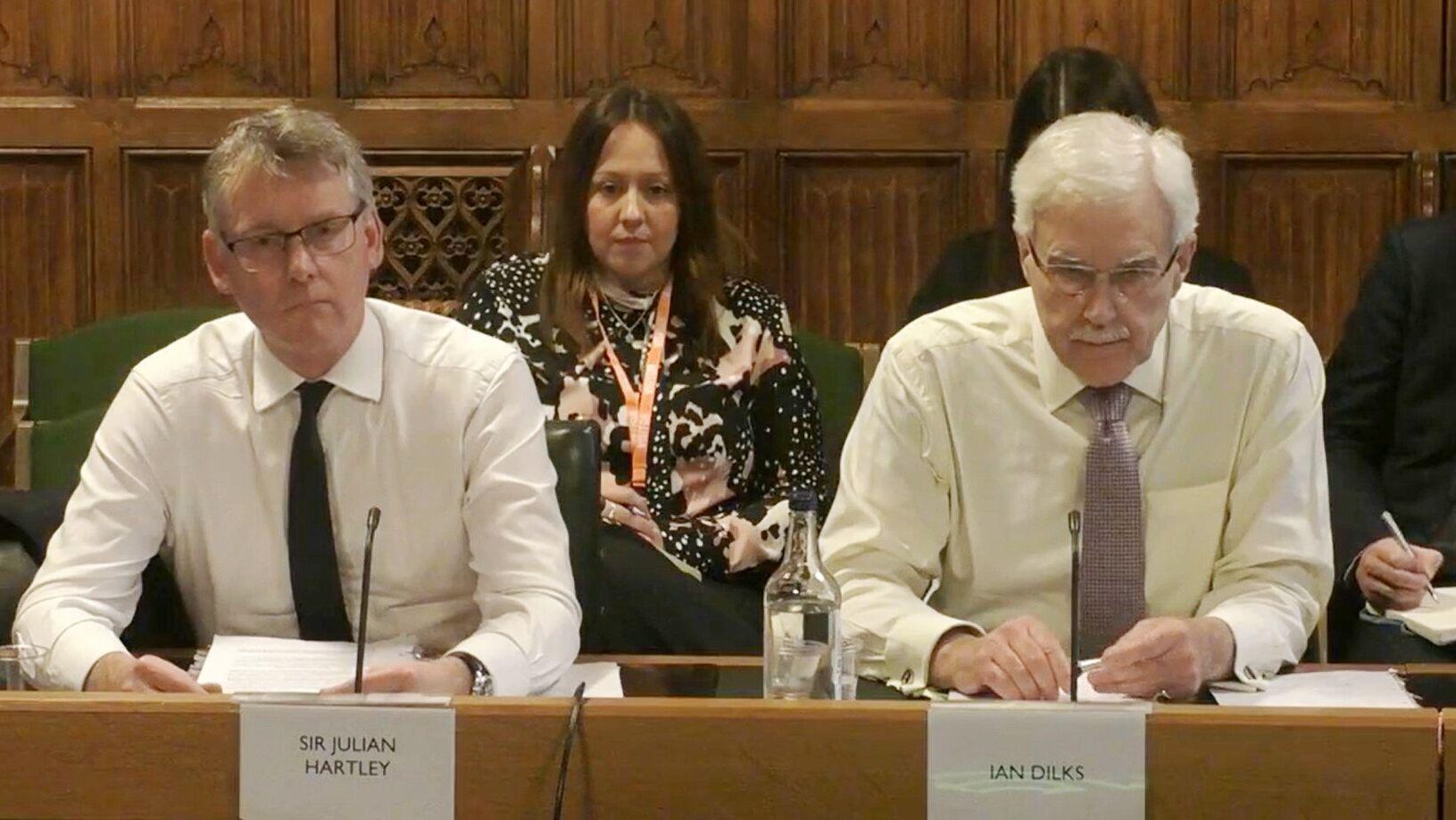The pros and cons of homeworking
NHS managers across the UK are discovering the joys – or horrors – of working from home. While we may be on the cusp of a permanent change to working culture, writes Alison Moore, we’ve seen little consultation or thinking about the long-term benefits and pitfalls.

The last few months have proved a revelation to many NHS managers. For the first time, many have been allowed – even expected – to work from home to avoid the risk of Covid-19 transmission.
And for many managers, it has been a welcome change, allowing them to see more of their family and to save time previously spent commuting to the office and going to meetings.
But as the NHS emerges from the initial wave of the pandemic, managers are starting to ask whether these new working patterns will become permanent – and whether they want them to.
A societal shift
MiP chief executive Jon Restell, points out that many managers had wanted to work flexibly before. But many only saw a change of attitude as the NHS geared up to deal with the pandemic and managers were working extreme hours and providing seven-days-a-week cover. As government guidance promoted home working, many managers – even some operational ones – were encouraged to work from home in a profound change which has extended beyond healthcare. “It is one of those societal shifts where it suddenly became acceptable to work from home,” he says.
However, three months on, Restell suggests that it’s too early to decide whether these new ways of working, born out of the crisis, should be permanently adopted.
Geoff Underwood, vice-chair of MiP’s national committee says a more nuanced approach is needed. “We shouldn’t just go back to normal but should keep the positive benefits,” he explains. “For example, almost all project work can be done remotely. We can organise meetings on Microsoft Teams rather than in person.”
The challenges to doing this vary between NHS settings: in clinical commissioning groups and commissioning support units it may be more acceptable than in acute trusts. “I think particularly hospital trusts are the oldest school part of the NHS. They largely rely on face-to-face meetings. I think a lot of organisations which rely on people being there develop a culture of presenteeism and long hours,” Underwood says.
“The back-to-back meetings culture in a lot of organisations makes it difficult to do your work unless people arrive early and leave late,” he adds. “That culture is knackering. It burns people out. It is not conducive to work-life balance and it can exclude people.
“We are in a workforce crisis in the NHS and lose people all the time to other sectors. I know many people who look at deputy director jobs and say, “No thanks”. If we can make health and social care jobs better jobs, that will be a benefit,” Underwood concludes.
Your home is your office
Restell, too, can see the benefits – less time and expense travelling for many staff, less carbon emissions for the NHS and, in some cases, improved productivity and engagement.
But he points out that it can be harder to delineate work and home life when your home is your office. There is a risk that managers are seen to be – and feel they should be – always available. Restell says some managers are also complaining of exhaustion from too much screen time, as face-to-face contact is replaced by incessant Teams or Zoom calls with few breaks in between. The intensity of work changed during the first few weeks of the Covid-19 crisis, Restell notes, and may not have declined significantly since – but these extra hours may be invisible when they are being done in people’s homes .
And some staff will struggle with home working for a range of reasons. While long hours in the office can be a struggle with young children, working while they are around is also challenging. Managers may not have a suitable area to work in – especially if there are other people in the house – they may end up incurring additional costs such as broadband, heating and telephone calls, and they may not have the right office equipment. “We will have a massive explosion of back issues because of what has been happening in the last few months,” warns Restell.
Underwood says some managers undoubtedly find working from home more difficult than being in an office – some find it hard to settle to work, for example, and for a few there can be more dangerous issues such as the threat of domestic violence.
Restell says he’s concerned by the widespread assumption that these new ways of working are going to become the “new normal”, when there has been no consultation with staff or their unions, and without proper consideration of these pros and cons, including the intensity with which people have been working. “We need to reinstate some of the change processes,” he says. “It felt right to deal with an emergency situation… people will have worked like that with a sense of trust that it was temporary and, although it might lead to changes, they would be discussed.”
Homeworking in community health services
Sarah Billiald runs First Community Health and Care, a social enterprise providing community health services mainly in Surrey. She has been working mainly from home since the epidemic started. Her senior executive team has been split into two – with one half always out of the office – to reduce the risk of too many key people being infected with the virus at the same time.
The demands of the pandemic mean that she has had to increase her working days – she was working four days a week – but she has enjoyed being able to take her son to school more regularly.
Looking forward, Billiald expects some staff will find it hard to work at home because of factors like limited work space or the impact on their mental health. The organisation wants to take a “more flexible approach”, she says, which balances the needs of the service, the individual’s preferences and what can be accommodated within its buildings.
“What I’m anxious about is the notion of fairness,” she adds, pointing out that some roles allow more flexibility about where you work than others. “I think navigating this next phase is going to be quite challenging. It is a combination of individuals’ preferences, business need and what is fair.”
While Billiald expects the foreseeable future to include more home working, she can see some things which will be difficult to replicate on Zoom or Teams. Informal ‘corridor conversations’ are more difficult than more formal meetings, and the experience of new recruits will be very different when their colleagues are partly or wholly working from home. As a chief executive, she is also concerned about whether she will get out to the organisation’s multiple sites as much as she used to, and how she will be able to create a team mentality when people are mostly working remotely.
But overall, the crisis has made Billiald reassess the need to be in the office all the time. “I personally did not think I could do as much of my job at home as I can,” she says. “I’m convinced I can do a day or so a week at home.
Cost considerations
Underwood points out that some organisations may have a financial incentive to push for more permanent home working. Offices are expensive to rent and maintain – and some NHS bodies are beginning to wonder if there are significant savings to be made on office space. He knows of at least one CCG that has already surveyed it’s staff on their attitude to a permanent shift to homeworking.
“Long term this could present an opportunity to reduce fixed costs and also the NHS’s carbon footprint,” Underwood says. “We’re hearing that in NHS England and CSUs that we may be asked to stay away from our offices for 12 to 18 months. People are having to think, ‘How do I work from my home for the long term?’”
In the coming weeks, home working may still seem the best option for many managers. It will be challenging to achieve social distancing in most NHS offices. Some sites won’t be able to accommodate the same number of people, at least in the short term and some staff may be shielding or worried about vulnerable people they live with. And going into the office often means using public transport – which may still be an increased risk.
Missing the office?
But Underwood worries that some managers may miss the social side of the office. He suggests that one option may be working from home part of the time and then going into an office – which need not be their original organisation’s office, but could be other NHS premises – for the rest.
“There are issues for people who live alone in terms of loneliness,” he says. “In the long term people will want to get together, and ultimately shake hands and make each other coffee which we are not allowed to do at the moment.”
Some NHS managers at are increased risk from coronavirus and may be reluctant to return to work while the virus is still circulating in their workplace. People who are currently shielding are being given new advice from August, but will still need to take special care to minimise contact with others from outside their households or ‘support bubbles’.
Government guidance says that clinically vulnerable people who can’t work from home should be offered “the safest available on-site role” which enables them to stay 2m away from others: closer contact should be risk-assessed.
But some managers who are currently shielding – and for whom going back to an NHS site is not judged safe – may end up working from home until a vaccine is available. MiP national officer Ruth Smith says it can be particularly difficult being the only person taking part in a meeting remotely, especially when those in hospital are now required to wear masks, which can make hearing the conversation even harder. This can make managers who are having to shield feel even more marginalised.
Homeworking in a GP Federation
Craig Nikolic is the chief operating office of Together First, a GP federation in Barking and Dagenham. He has worked predominately from home since joining the organisation two and a half years ago and everyone who joins the federation is told that this is their normal way of working. Andrew Neel/Unsplash
Andrew Neel/Unsplash
But the lockdown period has seen meetings which would previously have been held face to face become virtual. While the federation’s staff were well used to this, it initially proved more challenging for people from other organisations – and that situation unlikely to change in the immediate future.
“We’re not saying we need any time soon to make a decision to have everything face-to-face,” Nikolic says. While the management board may return to face-to-face meetings, he feels meetings with external organisations – which usually involve travel time – will probably remain online. “We are now at the point where we have broken the mindset of having to be face to face,” he says.
To some extent, the federation have been able to replicate elements of face-to-face working – where they would have had a working lunch before a meeting to allow time for chat, that is now built in to the online meeting. Building in wellbeing time is important – as is gossip time, suggests Nikolic.
But the federation also makes sure staff have the right infrastructure to work at home and will pay for the necessary equipment. “As I don’t waste time commuting, I have made time for the little nice things. It has given people their lives back and improved work life balance,” he says.
Related News
-

Regulating the managers: more questions than answers
The Labour government’s plans for regulating NHS managers are still shrouded in mystery, and the three options on the table each have their pros and cons. Rhys McKenzie weighs up the choices and gauges the views of MiP members on the best way forward.
-

The inspector falls: why the CQC needs a fresh start
After years of chaos, the Care Quality Commission urgently needs to rebuild trust and credibility with the public and the services it regulates. What needs to change and what are the priorities for new boss Sir Julian Hartley? Alison Moore reports.
-

Voice, value and vision: what analysts need from the NHS
Data analysts play a vital role in an NHS which is increasingly data-driven and focused on public health trends. But the NHS faces fierce competition for skilled analysts and many feel the health service fails to value them or fully use their talents. Alison Moore reports.
